Briefly in the Shadows

🌎 The Big Topic: What I’m Discovering in Dry April
I made a new year’s resolution to drink less alcohol. I didn’t have a numerical goal in mind and I didn’t participate in Dry January, but whatever the number (number of drinks, fluid volume, ABV, etc.) I wanted it to be lower than before. What gets measured gets managed.
I started in January by building a habit of simply counting the number of drinks I consumed. Then in February and March I set weekly goals of consciously reducing the weekly figures from January. For April, I decided to drink absolutely no alcohol: Zeros, zeros, zeros across the board!
Here’s what I’ve found so far.
I weigh less
I’ve shed 6.7 lbs (3 kg) from free-flowing January through teetotaler April without any change in what I eat or how much I exercise (aside from walking a lot, I don’t exercise).
My wallet weighs more
I spent $1,200 at bars in January alone (alcohol + taxes + tips). That figure declined to $700 in March, and is now at $84 for April so far (mocktails and nonalcoholic beer).
Water has always been free, but bartenders give me Sprite, ginger ale, and ginger beer for free. I’ve tried to get friends to order these sodas with their drinks, so the bartender doesn’t perceive it as a revenue-less transaction.
You can’t beat the wine list
The beer, wine, and liquor list may run to 100 items, but the alcohol-free options are usually paltry and will never match the diversity of flavor.
But there are some good near-beers and mocktails
People ridicule O’Doul’s and I’ve never actually tasted it. This month I’ve had Athletic Brewing Company’s nonalcoholic beers and they taste like the alcoholic beers I’ve had before.
Another mocktail I’ve come to like is St. Agrestis’s Phony Negroni, which is bitter and sweet like a conventional Negroni, just without the alcohol edge.
You don’t have to consign yourself to water and sodas.
Records break, time slows down, in vino veritas
Recently I’ve been to bars with friends while they drank and I didn’t. I noticed a few things about people as the evening carries on: people repeat themselves a lot, the pace of alcohol consumption accelerates after a few hours, people share thoughts they wouldn’t normally share with you.
Longwinded stories and lulls in a conversation are now painfully obvious to me and they slow my perception of time. This is the one downside I’m trying to figure out how to resolve.
📺 The Screen
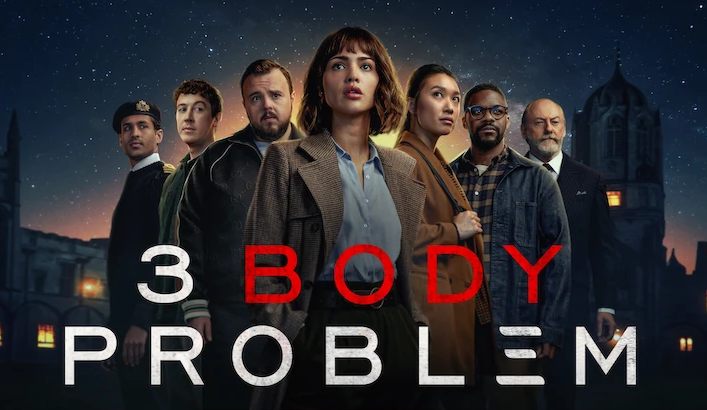
3 Body Problem (Netflix). This series, based on a popular Chinese sci-fi novel, switches between present-day Britain and Cultural-Revolution China.
Today’s scientists grapple to prepare for humanity’s greatest impending threat. I eagerly await the next season.
📻 The Speaker
- Blackbiird, Beyoncé. The song, originally written by Paul McCartney, was inspired by the integration of Little Rock's Central High School in 1957. (Spotify | Apple Music)
- Pacing Like a Lion, Color Palette. The DC band released this dream—pop song last year. The song’s shoegaze vibes remind me of My Bloody Valentine. (Spotify | Apple Music)
🕺 Across the Sun and Cleveland
My friend Matt and I drove to Cleveland to witness the total solar eclipse, a stunning astronomical event I haven’t witnessed since I went to Jefferson City, Mo., in 2017.
Totality is worth the trip: even when the moon blocks 99.9% of the sun, there’s still 100 times more light than when the moon blocks 100% of the sun. What a difference four minutes make:

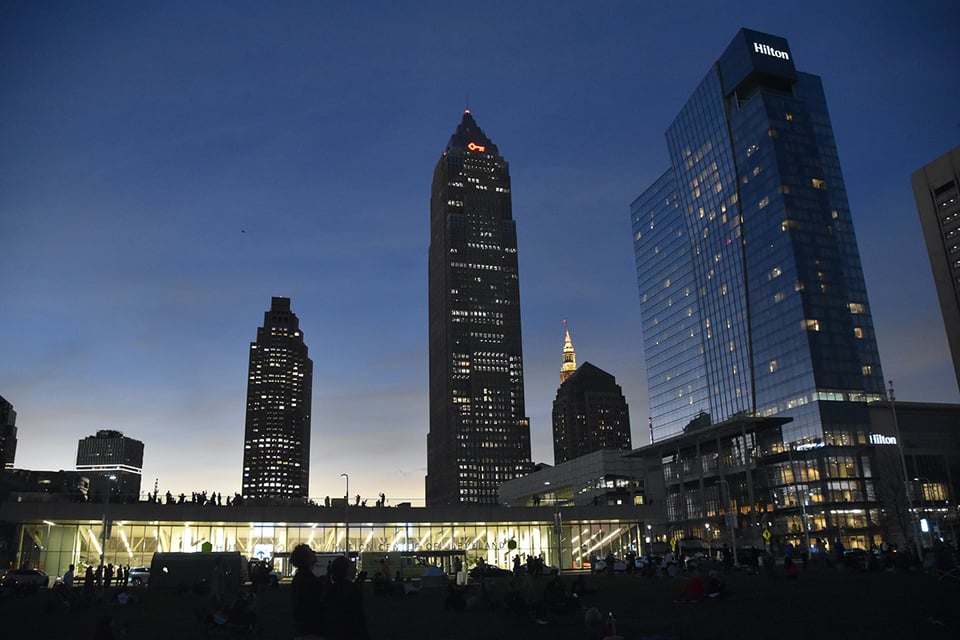

It’s difficult to capture the full effect with a camera during totality and this photo doesn’t do the eclipse justice. During the four minutes of totality, with the sun fully blocked, I removed my filtered glasses to observe a sky that was dark blue, not nighttime black like in this photo.
There was no sun, but in its place I marveled at a bright silver ring shimmering in the sky. At the bottom of this ring was a red dot, a solar prominence of plasma erupting outward from the sun’s surface. A total eclipse is the only moment you can view this with the naked eye.
Just before totality, I noticed a change in light, which became silvery as shadows became sharper:
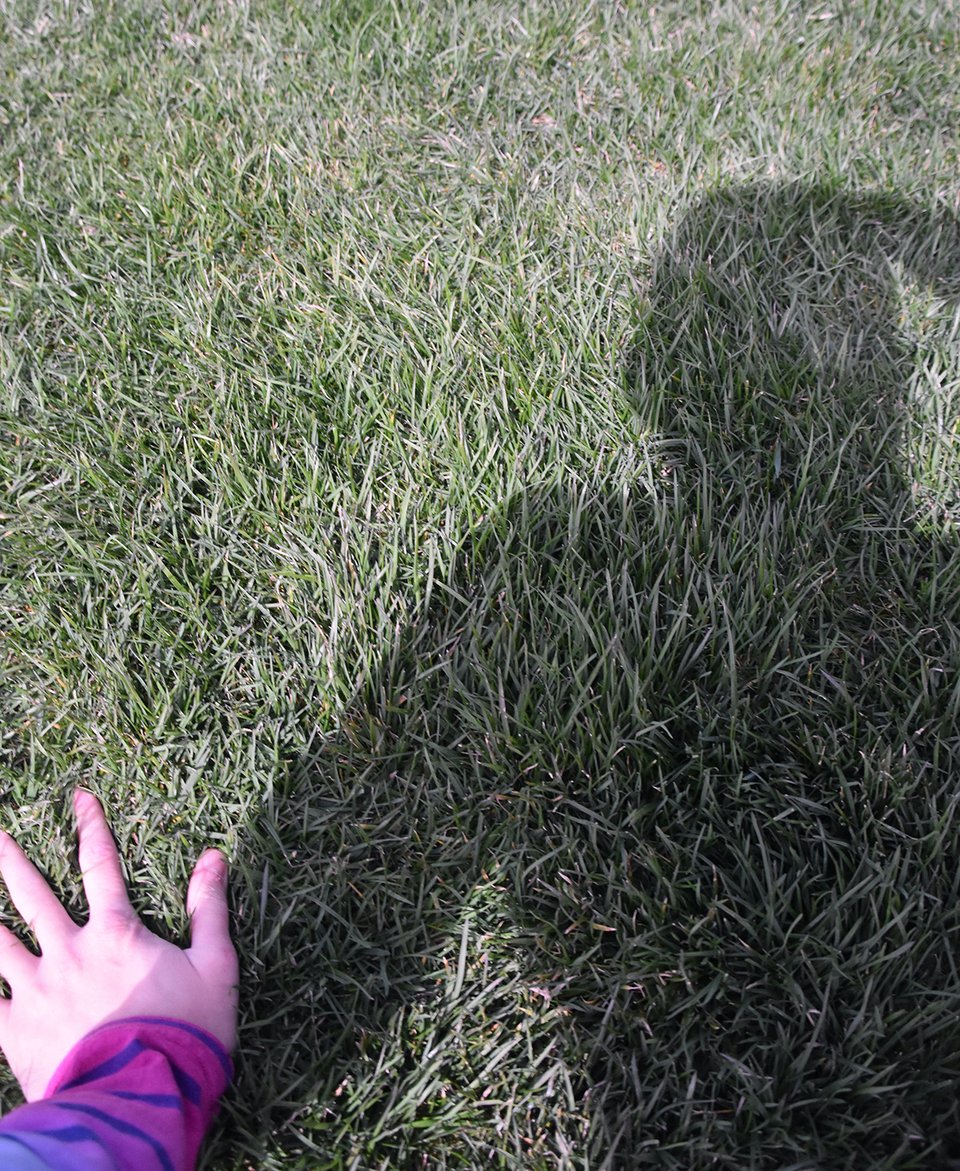
You can witness the next total solar eclipse in August 2026 in Spain and I’m seriously considering it.
Aside from being people in the sun/moon, we explored Cleveland during the rest of our brief visit.

Modernist architect Marcel Breuer designed the Cleveland Trust Tower just a few years after he designed the HUD headquarters in D.C. A friend referred to Breuer as “Big concrete square guy.”

Here are some other things I saw:
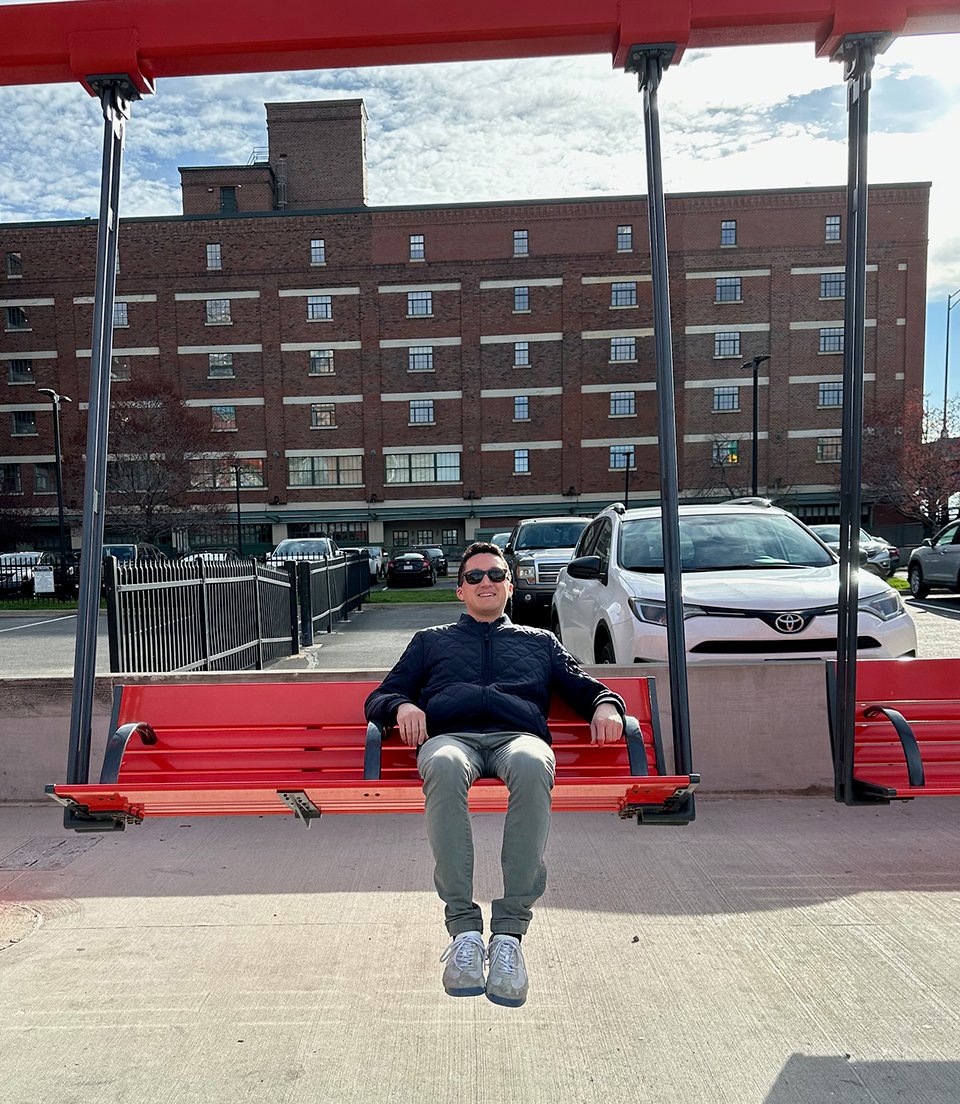
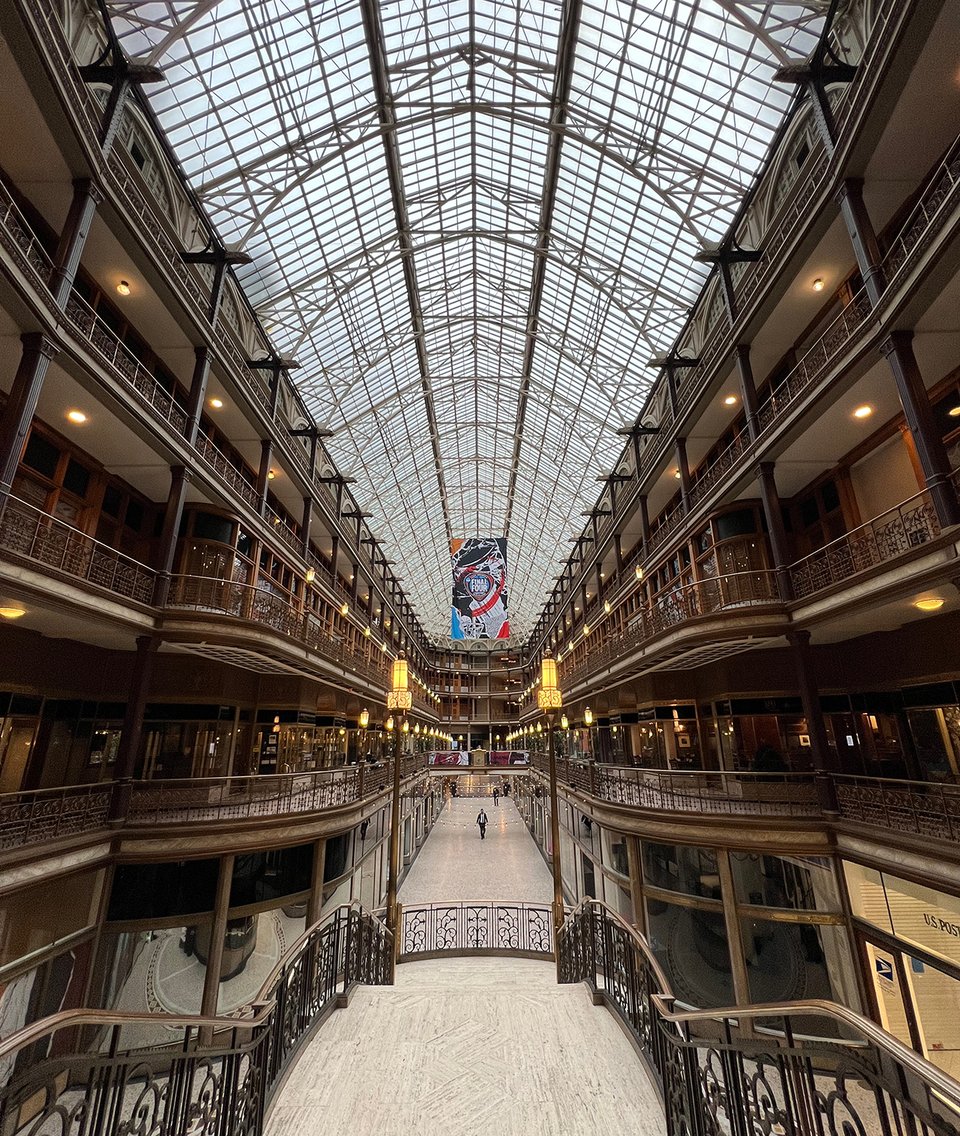
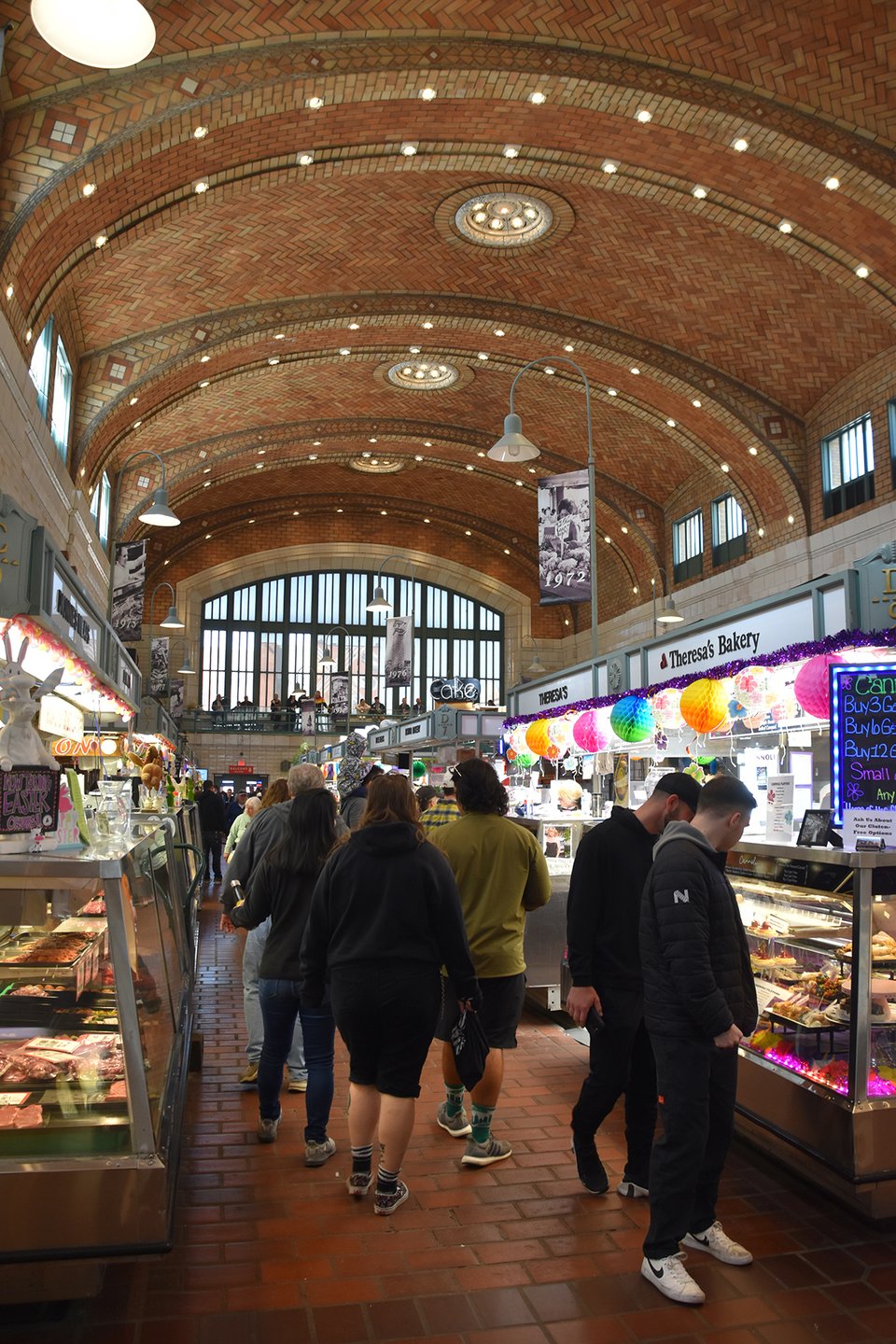


🔗 Assorted Links
- 📝 Japan is giving Washington 250 new cherry trees to replace those to be lost in construction work. The trees will replace the hundreds that will be leveled to raise the Tidal Basin's seawall. (AP)
- 📝 Washington, D.C., is a test case for phasing out the tipped minimum wage. Restaurants have reduced staffing. (Marketplace)
- 📝 Commanders draft Senate veteran to finesse stadium deal. The NFL team hopes to lobby Congress to permit the redevelopment of DC’s defunct RFK Stadium. (Axios)
- 📝 The economics of American lotteries: Poorer citizens spend a staggering amount on tickets. (The Economist)

- 📝 Who Will Pay for the Baltimore Bridge Collapse? Disputes over liability and the cost of claims could take years for insurers to resolve and result in billions of dollars in payouts. (New York Times)
- 📝 What Chinese Outrage Over ‘3 Body Problem’ Says About China. The Netflix series showcases one of the country’s most successful works of culture. (New York Times) ... But its history lessons on the Cultural Revolution are not for everyone. (The Economist) … Maybe it’s a metaphor for U.S.-China relations. (New York Times)
- 📝 Spain to eliminate ‘golden visas’ for wealthy foreign home buyers. In a whiff of xenophobic scapegoating, the country joins Portugal, Ireland, and Australia in restricting golden visa programs. (Washington Post)
- 📝 Getting the last laugh. For half a century, viewers scorned the laugh track while adoring shows that used it. Now it has all but disappeared. (The Atlantic)
- 📝 Fake Tags Add to Real Chaos on American Roads: Officials are moving to increase enforcement and change laws in response to the rise in counterfeit or expired plates, which exploded during the pandemic. (New York Times)
- 📝 Is the Boom-and-Bust Business Cycle Dead? There is a growing view that the U.S. business cycle has changed (for better) in a more diversified economy. (New York Times)
- 📝 The endless quest to replace alcohol: From kava to “sleepy girl mocktails,” can anything ever take the place of booze? (Vox)
- 📝 The Sober-Curious Movement Has Reached an Impasse. There's broad disagreement on what age is too young to drink mocktails and nonalcoholic beer. (The Atlantic)
- 📝 Drive-through restaurants are more popular than ever. And they're making American communities less livable. (Vox)
- 📝 German gallery fires employee for hanging own art in exhibition: A modern art gallery in Germany has fired an employee after discovering the budding artist had hung his own work in an exhibition. (BBC)
📊 The Numbers
February's Metrorail ridership numbers for weekdays, Saturdays, and Sundays, respectively, compared to prepandemic levels.
- 📝 Source: Metro Ridership Snapshot: February 2024, WMATA.
- 📝 Cited in: How one city pulled public transit from the brink — and what the rest of the country can learn from it: There’s no substitute for better service. (Vox)
Share of America’s leading newspapers operating some kind of online paywall, up from 60% in 2017.
- 📝 Source: Newspaper paywalls slowly increasing, but online news is still mostly free. (Reuters Institute for the Study of Journalism)
- 📝 Cited in: Democracy Dies Behind Paywalls: The case for making journalism free—at least during the 2024 election. (The Atlantic)
🎬 The Wrap
Why do bad things happen? I've trained myself to generate multiple hypotheses, prioritizing charitable and utterly mundane explanations over cynical and baroque theories.
I'm countering human evolution:
The real world is messy. Most events don’t fit together like a jigsaw. Container ships sometimes knock down bridges in freak accidents. The moon blots out the sun completely, on average, every 18 months, though its visible location on Earth varies wildly. Earthquakes may be fully explainable by the science of plate tectonics, but we’re incapable of predicting them, so it feels significant when New Jersey shakes rather than California.
Yet the human mind was forged, through relentless evolutionary pressures, to navigate a less complex world. Growling saber-toothed cats presented our ancestors with a fairly straightforward pattern of cause and effect—at least compared with the intricacies of globally interconnected economics and politics, which allow the people of one country to be instantly affected by a terrorist attack in another or by a single infection in a distant, unknown city. But the cognitive habits inherited from that simpler time yield something I call “magnitude bias,” in which we wrongly assume that major events must have major causes, never small or arbitrary ones. A bridge collapse must have a hidden hand, a nefarious purpose behind it, not something so banal as a technical failure.